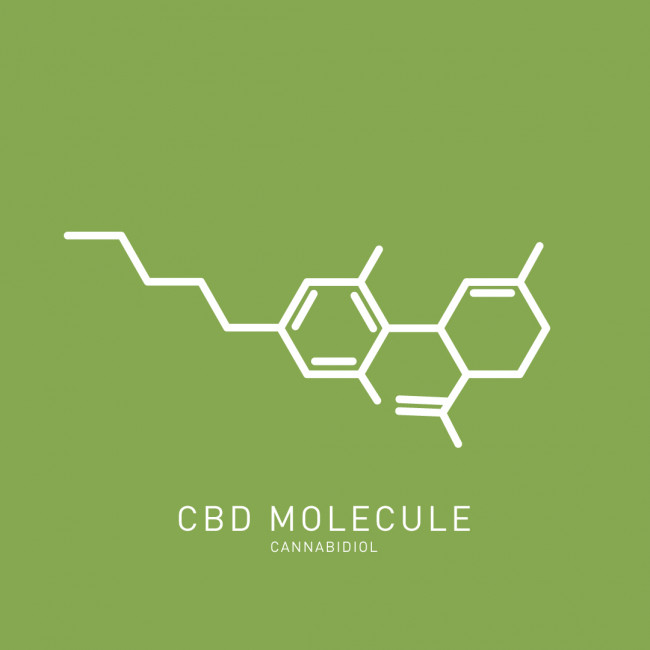
Inside the cannabis plant, an intricate system of chemical compounds works together to create the thousands of unique effects experienced when consuming the different strains available on the market. Chief among those compounds are cannabinoids, terpenes, flavonoids, and other plant material. While terpenes are like the essential oils that control smell and flavor, cannabinoids (and two in particular) drive the mental and physical effects of cannabis consumption. Those two cannabinoids, THC and CBD, we will explore further in this article.
What is THC?
A dominant compound affecting your brain and body is the potent molecule called tetrahydrocannabinol, known as THC to most people. THC has gained notoriety as the cannabinoid that gets you high, but this psychoactive molecule possesses many additional effects that deserve further study. While we only found the compound about 60 years ago, humans have used cannabis as medicine for millennia, with the first recorded use dating back to China in 2727 B.C. in a book written by Emperor Shen Nung, the father of Chinese medicine.
Raphael Mechoulam first discovered THC at Hebrew University in Jerusalem, and the story is remarkable. According to Mechoulam, as quoted in BioMedCentral, “It all started from a fateful bus ride in 1964, when I brought five kilos of Lebanese hashish I received from the Israeli Police to my laboratory at the Weitzman Institute in Rehovot.”

Using this questionably legal bag of hash, Mechoulam and his team isolated, identified, and synthesized ∆9-THC (delta-9 tetrahydrocannabinol), the primary psychoactive form of THC. They also managed to do the same with cannabidiol, or CBD. Many other such compounds, known as cannabinoids, have since been found in cannabis. Several of which, including ∆9-THC, alter the body in unique ways when consumed.
After detecting THC, it was a mystery as to how the compound affected the brain and body. Almost 20 years later, Dr. Mechoulam and others made history yet again by discovering the human endocannabinoid system (ECS), as well as two cannabinoids created naturally by the body, anandamide, and 2-AG. It turns out that the brain has more cannabinoid receptors than almost any other system!
Consuming cannabis sends THC into the bloodstream, where it binds to and activates “receivers” in the brain and body known as the CB1 and CB2 receptors. Once activated, the cannabinoid communicates to the body to react—whether that is to create an altered state of mind or easing of inflammation in the body.
What is CBD?
Cannabidiol (CBD) is another prevalent cannabinoid found in the cannabis plant. The significant difference between CBD and THC comes down to the psychoactive effect.
Both compounds work by communicating with receptors. However, unlike THC, CBD does not bind to the CB receptors making CBD non-psychoactive. Since CBD does not bind directly to ECS receptors, it does not stimulate them as THC does to create the well-known “high” feeling. By influencing your ECS receptors indirectly, CBD restores homeostasis (or balance) in the body without psychoactive effect. What makes CBD special is that it has the ability to interact with several receptors in the brain. For example, CBD also communicates with serotonin receptors, particularly the 5-HT1A receptor, which may explain why it can help with temporary stress.

The Entourage Effect
In 1998, Mechoulam suggested that cannabis affects people through a combination of compounds, namely CBD and THC, in specific proportions that convey different effects. Since then, further research and theory have evolved this concept to include other compounds the plant produces, like terpenes or flavonoids. Imagine the effect as music, THC controls the volume, the other cannabinoids control the equalizer, and the terpenes are the genre of music. It can be fast and stimulating, calm, and relaxing, make you feel happy, introspective, or just plain silly. The choice is up to you!
Read our blog explaining the Entourage Effect for more information.
Where does that leave us?
Until the day when conclusive research fully defines how cannabis affects us, some things are at least certain: THC & CBD are top among the factors to consider in choosing the desired effects of a cannabis product. The balance of THC to CBD will have the most impact on what is felt by the product you consume.
